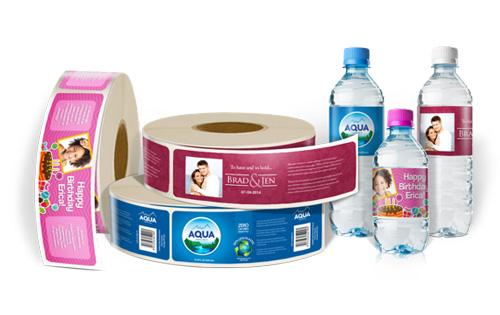In the dynamic landscape of modern business, where every detail counts towards creating a lasting impression, label printing has emerged as a crucial tool for companies aiming to distinguish themselves in a competitive market. From enhancing brand recognition to providing essential product information, labels play a pivotal role in conveying a company's identity and message to consumers. As technology continues to evolve, so does the art of label printing, offering businesses innovative ways to elevate their branding efforts and streamline their operations.
Evolution of Label Printing Technology
Label printing has come a long way from its origins, evolving significantly with advancements in printing technology. Traditional methods such as letterpress and flexography, which once dominated the industry, have given way to more sophisticated techniques like digital printing and UV printing. These modern technologies not only offer superior print quality and color accuracy but also enable businesses to customize labels with variable data and intricate designs, catering to diverse customer needs and preferences.
Digital label printing, in particular, has revolutionized the industry by allowing for cost-effective short print runs and rapid turnaround times. This flexibility is invaluable to businesses, especially those in fast-paced industries such as food and beverage or cosmetics, where product offerings change frequently, requiring labels that can be produced quickly and efficiently without compromising on quality.
Importance of High-Quality Labels
In today's hyper-competitive market, the importance of high-quality labels cannot be overstated. Labels serve as more than just identifiers; they are powerful marketing tools that can influence consumer perception and purchasing decisions. A well-designed label not only communicates essential product information such as ingredients and usage instructions but also reinforces brand identity through distinctive logos, colors, and fonts.
Moreover, labels play a crucial role in brand recall and recognition. A visually appealing label that stands out on store shelves can capture the attention of potential customers and differentiate a product from competitors. This visual impact is enhanced by the use of advanced printing techniques that allow for vibrant colors, intricate designs, and unique finishes such as embossing or foil stamping, creating a tactile experience that engages the senses and enhances perceived product value.
Customization and Personalization
One of the key advantages of modern label printing technology is its ability to offer customization and personalization options. Businesses can now tailor labels to specific market segments or individual preferences, thereby strengthening customer engagement and loyalty. Variable data printing allows for the inclusion of personalized messages or promotional offers directly on labels, making each product feel unique and special to the consumer.
Furthermore, digital printing enables cost-effective prototyping and testing of different label designs, empowering businesses to experiment with new concepts and gather valuable feedback from consumers before committing to large-scale production. This iterative approach not only reduces time-to-market but also minimizes the risk associated with launching new products or marketing campaigns.
Sustainability and Eco-Friendly Practices
In an era increasingly concerned with environmental sustainability, label printing has also embraced eco-friendly practices and materials. Manufacturers now offer a range of options such as recyclable and biodegradable label materials, water-based inks, and energy-efficient printing processes that minimize carbon footprint. These initiatives not only appeal to environmentally conscious consumers but also align with corporate social responsibility goals, helping businesses reduce their environmental impact while maintaining high standards of quality and performance.
Applications Across Industries
The versatility of modern label printing technology extends across various industries, each with unique requirements and challenges. In the food and beverage sector, labels must comply with stringent regulations regarding ingredient lists, nutritional information, and allergen warnings, while also conveying brand values and product differentiation. Pharmaceutical labels, on the other hand, require precision and durability to withstand rigorous handling and storage conditions while ensuring patient safety and compliance with regulatory standards.
In retail and e-commerce, labels serve as essential branding tools that not only identify products but also facilitate logistics and inventory management. Barcodes, QR codes, and RFID tags printed on labels enable seamless tracking and traceability throughout the supply chain, optimizing operations and enhancing efficiency.
Future Trends and Innovations
Looking ahead, the future of label printing is poised for further innovation and growth. Advances in materials science, including the development of smart labels with embedded sensors or NFC technology, are opening up new possibilities for interactive packaging and real-time consumer engagement. These smart labels can provide consumers with instant access to product information, promotions, and loyalty programs, enhancing the overall shopping experience and fostering brand loyalty.
Additionally, advancements in augmented reality (AR) and variable content printing are transforming labels into interactive storytelling platforms, where consumers can unlock immersive digital experiences by scanning or interacting with the label using their smartphones or tablets. This convergence of physical and digital worlds not only enhances product visibility but also creates opportunities for targeted marketing campaigns and personalized consumer interactions.
Conclusion
In conclusion, label printing has evolved into a sophisticated discipline that goes beyond mere product identification to encompass brand storytelling, consumer engagement, and sustainable practices. As businesses continue to navigate a rapidly changing marketplace, leveraging cutting-edge label printing technologies and practices will be essential in achieving competitive advantage, driving brand growth, and meeting evolving consumer expectations.
By embracing innovation, customization, and sustainability, modern businesses can redefine labels as powerful tools for communication, differentiation, and connection with consumers in an increasingly interconnected and competitive global economy. As such, investing in high-quality label printing is not just a business decision but a strategic imperative for building lasting relationships and driving long-term success.
